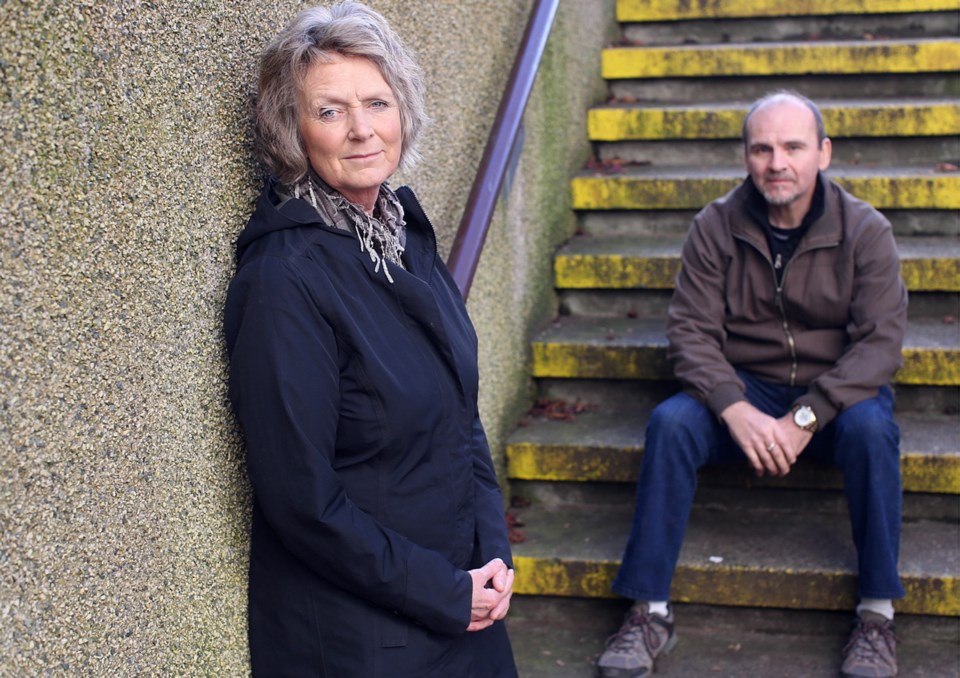To say Hilary Pryor’s new documentary is as mind-blowing as the brain-injury statistics that inspired her to make it is no exaggeration.
“This is a hidden epidemic that needs to be addressed,” says the Victoria filmmaker whose film A Change of Mind doesn’t just explore and humanize the misunderstood world of brain injuries.
It also exposes the lack of support services for an alarmingly high number of brain-injury survivors, many still undiagnosed.
“What really surprised and motivated me were those statistics,” said Pryor, whose Telus-funded film airs Nov. 19 at 9 p.m. on CHEK TV, and Nov. 20 on OutTV at 8 p.m.
Pryor learned that 165,000 Canadians have a traumatic brain injury each year; that 95 per cent of marriages fail after a spouse develops a brain injury; that 80 per cent of the prison population has a history of brain injury; and that only 20 per cent are sports-related.
“It can happen to anyone, anytime, anywhere,” says narrator Derrick Forsyth, the brain-injury survivor whose own story anchors this life-affirming documentary.
Forsyth was amused to learn he was considered one of the people Lt.-Gov. Judith Guichon addressed as the “film stars” in attendance at a special screening at Government House Tuesday night.
Guichon’s “movie night” guests included the filmmakers, brain-injury survivors, Cridge Centre for the Family staff and board members, caseworkers, community leaders and legal and medical experts whose insight complements stories shared by survivors.
Forsyth, who now lives at Mary Cridge Manor and believes he had an undiagnosed brain injury in childhood, is a compelling character whose sense of humour, candour and commentary are highlights.
“I got hit too many times,” he says, recalling how he and his brother joined a boxing club when he was young. Underscoring a crucial point — that brain damage can escalate with repeated injuries — the survivor who spent 13 years in and out of the court system also recalls the impact of another injury he incurred during a car crash.
“[It’s like] they took an eraser and wiped out half the [chalk] board,” says Forsyth, noting how routine tasks like shopping and banking are more challenging.
“Sometimes the teller is treating me like I’m retarded,” he says of a trip to the bank.
Another featured survivor is Nash, a Tofino-raised dive tender who survived a brain injury incurred while diving for geoducks.
Nash, now a roofer, suffered short-term memory loss, depression, concentration problems and alcohol addiction, and spent time in prison before getting his life back on track with support from his wife, Denise.
Survivors often “self-medicate” to deal with the pain, which can lead to criminal behaviour, the experts say.
Other survivors featured in the film include Robin, who was in a coma for 40 days and woke up blind and paralyzed. His sense of humour is evident at the Cridge Centre for the Family, where he participates in its Kale Kings social enterprise, which employs survivors who learn independence while preparing and marketing kale-based treats.
We also hear from Andy, who had a brain aneurism, and his ex-wife Lisa, who says: “I lost him when he woke up from surgery.”
“The filter is gone. We say what we feel,” says Andy, recalling the devastating effects of his brain damage before his recovery with support from Lisa, who remains his friend, and the Victoria Brain Injury Society.
“When a person has a brain injury the whole family has a brain injury,” notes Dr. Wayne Gordon, chief of rehabilitation psychology at Mount Sinai Hospital in New York. “The whole system has to adjust and adapt.”
Cridge Brain Injury Services program co-ordinator Janelle Breese Biagioni recalls the impact of her late husband Gerald Vernon Breese’s inappropriate behaviour and verbal abuse after his frontal-lobe injury.
The message that brain injury is “an invisible disability” is driven home by Geoff Sing, director of Cridge Brain Injury Services.
“You can’t put a bandage around their head,” Sing says. “People assume they’re OK, they look OK.”
Pryor was particularly struck by retired neurosurgeon Dr. Brian Hunt’s concerns about the number of undiagnosed brain injuries.
“Someone who has maybe been in a car crash goes to emergency with broken ribs or pierced organs, and the focus is dealing with them,” she says.
“If there isn’t an obvious gushing wound in the head, brain injury doesn’t figure in, but the likelihood is there is brain damage that gets missed. So people are sent home without support systems.”
A Change of Mind also touches on Victoria’s innovative Integrated Court program, which provincial court Judge Ernie Quantz helped develop to assist offenders with addiction and mental-health issues while reducing crime.
It wasn’t until another judge arranged to have the documentary shown to prosecutors that Pryor realized what a catalyst for change it could be.
“That’s the kind of momentum I wanted it to have,” she said.



